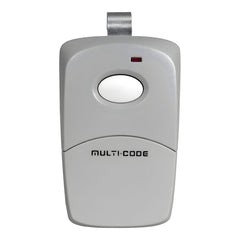Gaining seamless access to your property is a modern convenience many homeowners desire. Imagine arriving home and, with a simple press of a button already in your car, your gate smoothly opens, welcoming you in. Programming your gate opener to your car isn’t just a luxury; it’s a practical upgrade that enhances both your security and daily convenience.
This comprehensive guide will walk you through understanding, programming, and integrating your gate remote with your car. We’ll cover everything from the basics of gate remote technology to step-by-step instructions for different types of remotes, ensuring you can confidently set up this useful feature.
Understanding Gate Remote Programming: The Essentials
Before diving into the programming process, it’s important to grasp the fundamentals of how gate remote systems operate. At its core, gate remote programming is about establishing communication between two key components: your gate remote and the gate receiver unit.
- The Receiver Unit: This is the “brain” of your gate system, typically housed in a box near your gate or within the gate opener itself. It’s designed to receive radio signals from your remote control. Think of it as the gate’s ears, listening for your command.
- The Remote Control: This handheld device acts as the transmitter, sending signals to the receiver unit. When you press a button, it broadcasts a unique code that, when recognized by the receiver, triggers the gate to open or close.
The process of “programming” essentially means teaching the receiver unit to recognize the specific signal from your remote. This ensures that only your programmed remote can operate your gate, providing a secure entry system for your property.
Why Program Your Gate Remote, Especially to Your Car?
Programming your gate remote offers numerous benefits, enhancing both security and convenience. Integrating it with your car takes these advantages a step further:
- Enhanced Security: Programming allows you to set unique codes, ensuring only authorized individuals can access your property. This significantly reduces the risk of unauthorized entry and enhances your home’s security.
- Convenience and Streamlined Access: No more fumbling for separate remotes! Having your gate opener programmed to your car means one less device to carry. Operating your gate becomes as simple as pressing a button on your car’s visor or dashboard, just like your garage door opener.
- Customization and Control: Many modern gate remotes offer advanced features like setting opening and closing delays or time-based access restrictions. Programming unlocks these features, allowing you to tailor your gate operation to your specific needs.
- Increased Property Value: Features like integrated gate access can be attractive to potential homebuyers, subtly increasing your property’s appeal and value.
Integrating your gate remote with your car elevates convenience to a new level. Imagine the ease of smoothly entering your property without having to reach for a separate remote, especially on rainy days or when you have a car full of groceries.
Essential Tools for Gate Remote Programming
Before you begin, gather the necessary tools to ensure a smooth and efficient programming process. While the specific tools might vary slightly depending on your gate remote model, these are the common essentials:
- Screwdriver: Typically a Phillips head or flathead, needed to access the receiver unit or battery compartment on your remote.
- Ladder (Potentially): If your receiver unit is mounted high, a ladder might be necessary to safely reach it.
- New Batteries (Optional but Recommended): If your remote is older, having new batteries on hand is a good idea to rule out battery issues during programming.
- User Manual for Your Gate Remote: This is the most crucial tool. It contains specific instructions for your remote model, including programming steps, troubleshooting tips, and safety information. If you’ve misplaced your physical manual, check the manufacturer’s website – many provide digital versions.
Always prioritize safety and refer to your user manual for any specific tool requirements or safety precautions related to your gate system.
Step-by-Step Guide: Programming Your Gate Remote
Let’s get into the practical steps of programming your gate remote. The process can vary based on the type of remote you have. We’ll cover the two main types: fixed-code (dip switch) remotes and rolling code remotes.
Identifying Your Gate Remote Model: The First Step
The very first step is to accurately identify your gate remote model. This is critical because programming methods differ between models.
- Check the Remote Itself: Look for a model number or manufacturer name printed on the remote casing, often on the back or inside the battery compartment.
- Consult the User Manual: Your user manual will clearly state the model number.
- Manufacturer’s Website: If you’re unsure, visit the gate or remote manufacturer’s website. Many have product identification guides or image galleries to help you identify your model.
- Contact the Seller or Installer: If you still can’t identify your model, reach out to the company you purchased the gate or remote from, or the installer if you had professional installation. They should be able to assist you.
Once you know your model, you can find the correct programming instructions in your user manual or online.
Programming Fixed-Code Gate Remotes (Dip Switch Remotes)
Fixed-code remotes, often called dip switch remotes, use a series of tiny switches inside the remote and receiver to set a security code. These are generally older but still common.
Here’s how to program a dip switch remote:
- Locate the Receiver Unit: Find the receiver unit near your gate opener.
- Access Dip Switches on Receiver: Open the receiver unit’s housing to expose the dip switches. This might require a screwdriver.
- Access Dip Switches on Remote: Open your remote to find its dip switches, usually located in the battery compartment.
- Match Dip Switch Positions: Carefully set the dip switches on your remote to match the exact pattern of the dip switches on the receiver. Switches are typically toggled “up” or “down.”
- Test: Close up both units, and test your remote. The gate should now respond.
- Changing the Code (Optional): To change the code completely, alter the dip switch pattern on both the receiver and the remote to a new, matching pattern.
Programming Rolling Code Gate Remotes
Rolling code remotes are more modern and offer enhanced security. They use a code that changes with each use, preventing code theft.
Here’s the general process for rolling code remotes:
- Locate Receiver Unit: Find the receiver unit as before.
- Find the “Learn” or “Program” Button: Look for a button labeled “Learn,” “Program,” or similar on the receiver unit.
- Press the “Learn” Button: Press and release this button. An LED indicator light on the receiver should turn on, indicating it’s in programming mode.
- Press Remote Button: Within 30 seconds of pressing the “Learn” button, press and hold the button on your remote that you want to use for the gate.
- Wait and Test: The LED light on the receiver should blink or turn off to indicate successful programming. Test your remote.
Integrating Your Gate Remote with Your Car: Two Methods
Now, let’s focus on the exciting part: programming your gate opener to your car’s built-in system. There are typically two methods, depending on the type of remote you have. Always consult your vehicle’s owner’s manual for specific instructions related to your car’s HomeLink or similar system.
Programming a Dip Switch Remote to Your Car
- Ensure Remote is Working: Verify your dip switch remote is functioning correctly with your gate.
- Car Programming Mode: Refer to your car’s manual to enter the programming mode for its built-in remote system (often HomeLink). This usually involves pressing and holding one or two buttons in your car until an indicator light blinks. You might need to clear existing codes first (often by holding two outer buttons for an extended period).
- Simultaneous Press: Hold your working gate remote close to the button in your car you wish to program. Press and hold the button on your gate remote and the chosen button in your car simultaneously.
- Wait for Signal: Keep holding both buttons until your car’s indicator light changes (blinks rapidly or becomes solid), indicating successful programming.
- Test: Test the programmed button in your car. It should now operate your gate.
Programming a Rolling Code Remote to Your Car (Two-Step Process)
This method is slightly more involved due to the rolling code technology.
- Ensure Remote is Working: Confirm your rolling code remote works with your gate.
- Car Programming Mode (Step 1 – Signal Copy): Enter your car’s programming mode as described above.
- Simultaneous Press (Step 1): Hold your working gate remote close to your car’s chosen button and press and hold both the remote button and the car button until the car’s indicator light changes. This step copies the frequency signal.
- Receiver “Learn” Button (Step 2 – Synchronization): Go to your gate receiver unit and press the “Learn” or “Program” button (as you would when programming a new remote directly to the gate). The LED light on the receiver should illuminate.
- Car Button Press (Step 2): Immediately return to your car and press and hold the button you programmed in step 3. Hold it until the gate responds or the car’s indicator light changes again, confirming synchronization with the rolling code system.
- Test: Test the programmed car button. Your gate should now open and close.
Troubleshooting Common Programming Issues
Encountering problems during programming is not uncommon. Here are some troubleshooting tips:
- Remote Not Syncing:
- Battery Check: Ensure your remote batteries are fresh.
- Range: Be within close range of the receiver unit during programming.
- Clear Codes (Car): If programming to your car, try clearing existing codes first as per your car’s manual.
- LED Not Blinking (Receiver):
- Power: Verify the receiver unit is powered.
- “Learn” Button: Ensure you are pressing the correct “Learn” or “Program” button on the receiver.
- Gate Not Responding After Programming:
- Double-Check Steps: Carefully re-read your user manuals and re-attempt the programming steps.
- Compatibility: Confirm compatibility between your remote, gate opener, and car’s system.
- Factory Reset (Remote/Receiver): Consult your manuals for factory reset instructions and try resetting both, then reprogramming.
- Interference: Radio interference can sometimes disrupt the signal. Try programming in a different location or at a different time.
If troubleshooting doesn’t resolve the issue, consider contacting a professional gate technician for assistance.
Maintaining Your Programmed Gate Remote System
Once everything is set up, proper maintenance ensures long-term reliability.
-
Regular Remote Check-ups:
- Battery Inspection: Periodically check for battery corrosion or leakage. Replace batteries proactively.
- Cleanliness: Keep your remote clean and free of dirt and debris, especially around buttons.
- Button Functionality: Ensure all buttons operate smoothly and are not sticking.
-
Addressing Battery Issues Promptly: Don’t wait for your remote to completely fail. Replace batteries as soon as you notice reduced range or responsiveness. Use the correct type of batteries as specified in your user manual.
Conclusion: Enjoy the Convenience
Programming your gate opener to your car is a worthwhile endeavor, bringing a significant boost in convenience and security to your daily life. By understanding the process, carefully following the steps for your specific remote and car system, and performing regular maintenance, you can enjoy the seamless operation of your gate with the touch of a button in your car for years to come. Welcome home, with ease!
For a wide selection of gate remotes and accessories, visit: https://elitegates.net/collections/remote-controls

